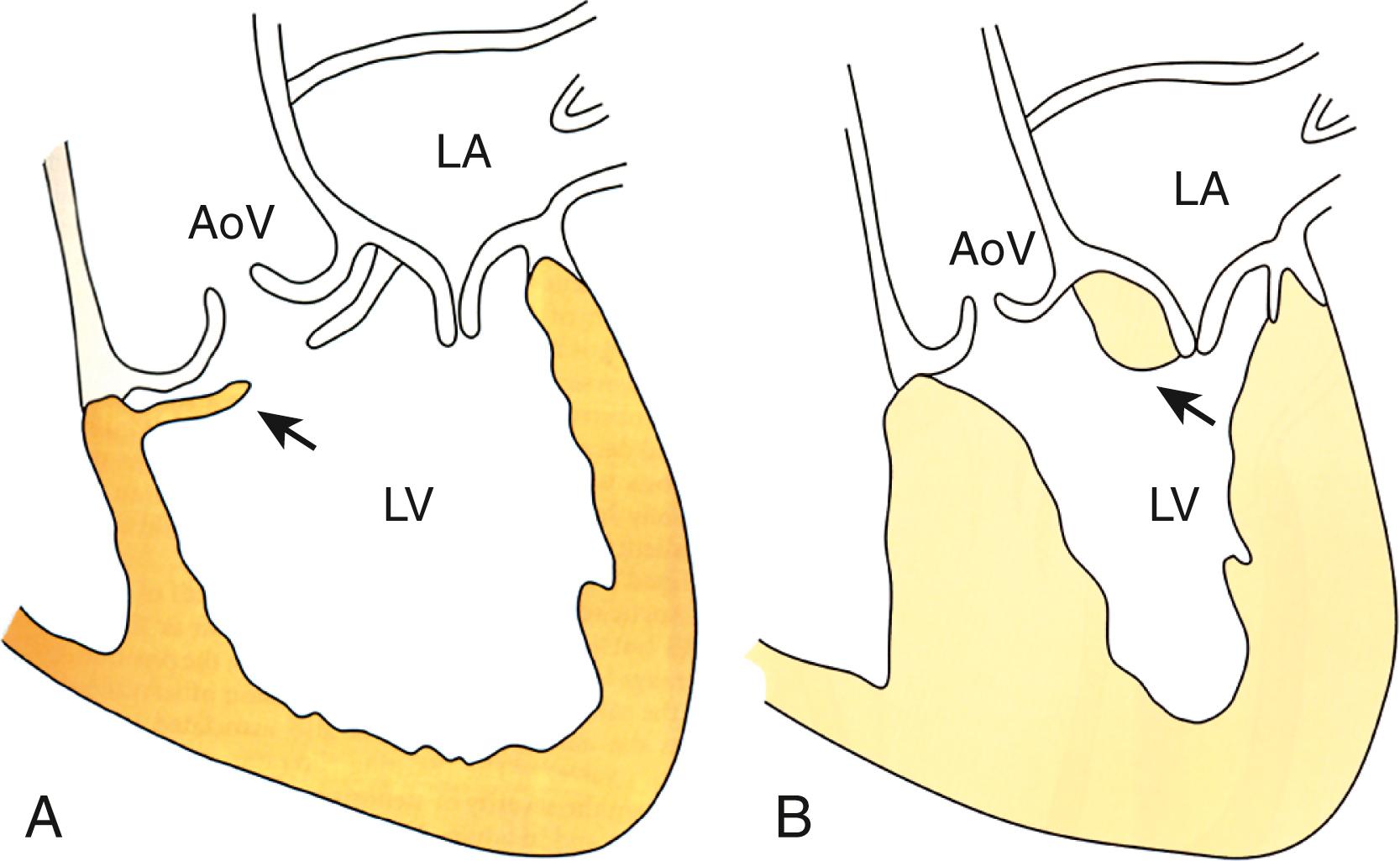Physical Address
304 North Cardinal St.
Dorchester Center, MA 02124
Subaortic stenosis (SAS) is rarely found in infants and is responsible for 10% of cases of left ventricular outflow (LVOT) obstruction in children. Although it can be diagnosed at any age, the most common presentation is in the first decade of life. Similar to valvular aortic stenosis, SAS is more common in males, with a male-to-female ratio of 2 to 1. Up to 50% of all cases are associated with other congenital abnormalities, including ventricular septal defect (VSD), aortic coarctation, atrioventricular septal defect, patent ductus arteriosus, bicuspid aortic valve, and often the Shone complex.
There are two main morphologies seen in SAS. In 90% of cases, a focal membrane or ridge is found, which is also known as discrete SAS ( Fig. 85.1A ). The circumferential ring may extend from the anterior septum to the anterior mitral leaflet, encircling the LVOT below the aortic valve. , The less common muscular, tunnel-type lesion is associated with a greater degree of stenosis caused by the diffuse thickening and narrowing of the LVOT ( Fig. 85.1B ). Patients with this form more commonly have concentric left ventricular hypertrophy (LVH). Other anatomic variants of obstruction exist, including abnormal mitral valve attachments and accessory endocardial cushion tissue. These forms of subaortic obstruction may represent a spectrum of morphology, with discrete SAS as a milder form and tunnel-type as the severe form.

Become a Clinical Tree membership for Full access and enjoy Unlimited articles
If you are a member. Log in here